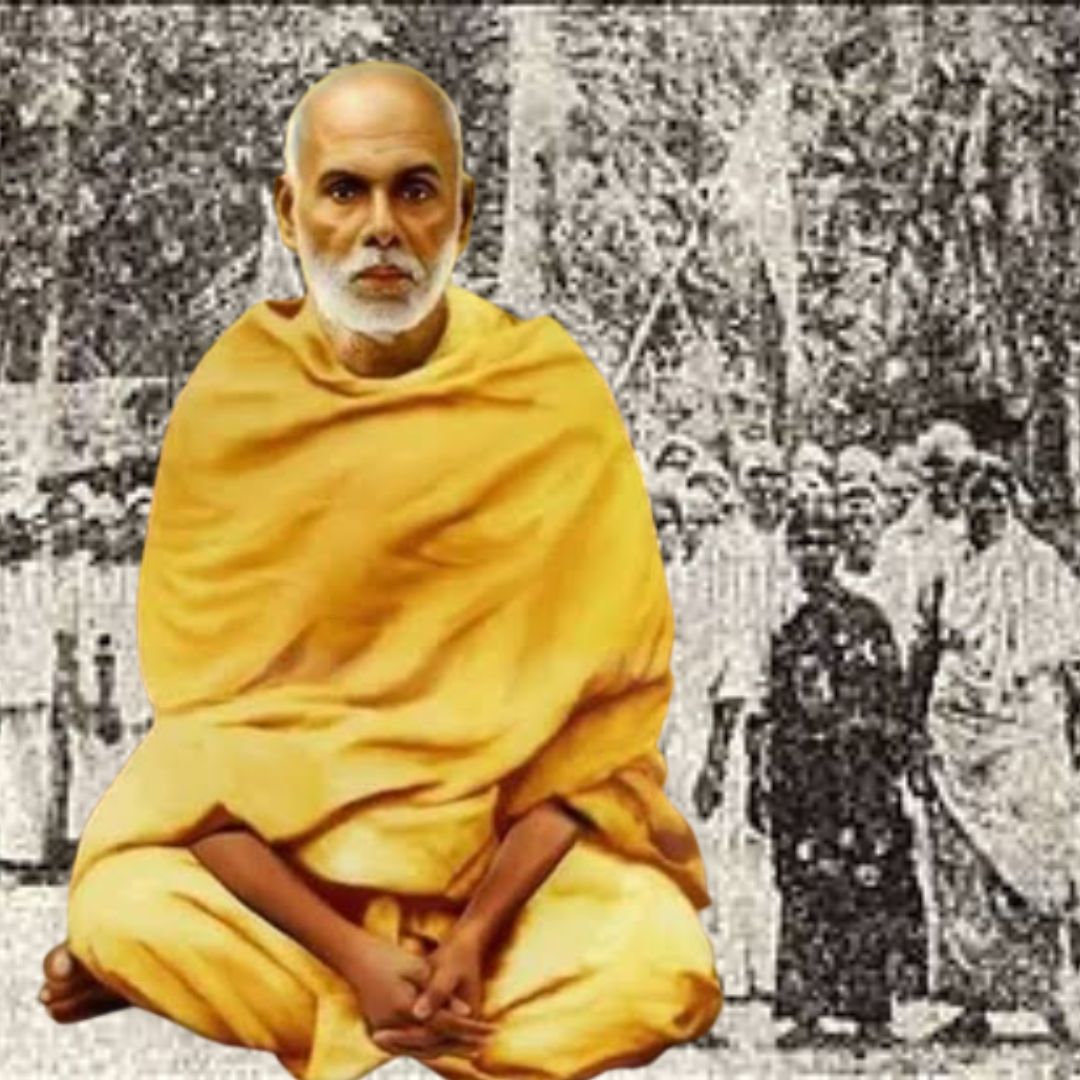Who Was Narayana Guru? Philosopher Who Replaced Brahminical Notion Of Hindu Religion With An Ezhava Idol
Writer: Laxmi Mohan Kumar
She is an aspiring journalist in the process of learning and unlearning many things. Always up for discussions on everything from popular culture to politics.
Kerala, 21 Sep 2022 5:55 AM GMT
Editor : Snehadri Sarkar |
While he is a massive sports fanatic, his interest also lies in mainstream news and nitpicking trending and less talked about everyday issues.
Creatives : Laxmi Mohan Kumar
She is an aspiring journalist in the process of learning and unlearning many things. Always up for discussions on everything from popular culture to politics.
Sree Narayana Guru, the social reformer often referred to as the "second Buddha" of Kerala, led his final movement against the casteist society on September 20, 1928. On September 21, the state observes his death anniversary and revisits his revolution.
Narayanan, or the revered Sree Narayana Guru, is the philosopher behind the famous saying "One Caste One Religion and One God to Mankind". A reformist born to a humble family from the Ezhava caste, he dedicated his life to educating and transforming the way social structures are viewed in the caste-ridden state.
Advocating for social equality, Narayana Guru trailblazed the path for many movements, including the Aruvipuram temple and the Vaikom Satyagraha. He passed away on September 20, 1928, but his legacy continues to live within Kerala's society even today as they observe Narayana Guru Samadhi.
The Evolution From Nanu Asan To Narayana Guru
Born to a lower-caste Ezhava household in Kerala, Narayanan was made aware of the limitations the caste-ridden society posed right from an early age. Having completed his education in a gurukula under the guidance of Chempazhanthi Mootha Pillai, he picked up on his leaning towards learning and philosophy. In the year 1881, he started a school in his village for the local children and earned the title of the beloved "Nanu Asan" (Nanu teacher).
A year later, he was married off to Kaliamma, but he did not associate himself with the relationship. Instead, he chose to dedicate his life to reforming the social inequality that prevailed in Kerala. Leaving behind the comfort of his home, he travelled through the southern states of the country and got to know several reformers, including Chattampi Swamikal and Ayyavu Swamikal.
Returning to Kerala, he visited the Aruvippuram village in 1888, and it was from here that his small acts of rebellion paved the way for larger religious and social movements.
In the 19th and 20th century Kerala, the lower caste communities such as the Ezhavas, Paraiyars, tribals and Pulayars faced discrimination from the upper caste community in all facets of life. From covering their chests in front of the upper castes to walking on the path that leads to places of worship, lower castes were subjected to severe punishments if found deviating from the system.
In such a space and time, Narayanan consecrated a piece of rock picked from the river as the idol of Shiva, which later on came to be known as the Aruvippuram Shiva Temple. It caused an uproar from the upper caste Brahmins, who questioned Narayanan's right to consecrate an idol.
Replying to them, he said, "This is not a Brahmin Shiva but an Ezhava Shiva," as quoted from Wikipedia. These simple words of deviation from the set ideas of caste hierarchy then went on to become a famous quote used against casteism.
During his lifetime, he went on to consecrate about forty-five places of worship across Kerala and other regions. None among those idols had a conventional structure of a deity. They ranged from a mirror which reflected the worshipper, a sculpture by an Italian sculptor, slabs inscribed with the words "Truth, Ethics, Compassion, Love", and so on.
Sowing The Seed Of Revolution Across Many Generations To Come
Aruvippuram came to be known as the place for many caste reformist movements thereon. It also happens to be the place that inspired Ezhava leaders such as Padmanabhan Palpu and others to establish the Sree Narayana Dharma Paripalana Yogam (SNDP Yogam), for the marginalised.
He is also known to have torchlit the Vaikom Satyagraha after having been stopped from passing through a road that led to the Vaikom temple. Many of his disciples, including Kumaran Asan and Muloor S.Padmanabha Panicker, protested against the incident and petitioned the Sree Moolam Popular Assembly in 1918 for the rights to enter the temple and worship.
Starting off as a committee that announced the Kerala Paryatanam movement, it developed into a mass protest which saw the support and participation of revolutionary leaders Mahatma Gandhi and Periyar. The movement resulted in the opening up of the temple and connecting three roads to people of all castes and later on influenced the Temple Entry Proclamation of 1936.
Despite his public acts of protest, Narayanan continued to be a revered teacher who ensured education reached even the lower strata of society. In 1904, he set up a school in Varkala, Trivandrum, for the lesser privileged children and provided them with free education.
Also Read: Periyar: Legacy Of The 'Elderly Man' Behind Tamil Nadu's Self-Respect Movement
 All section
All section















